Toddlers should depend on backseats for as long as possible. Riding a rear-facing car seat provides significant safety benefits that parents should definitely consider. Turning a car seat around isn’t something to speed through. The bones of young children are not well developed. They can’t withstand the pressures of a crash in a forward-facing car seat.
Rear-car seat protects the fragile head, neck, and spine and dramatically minimizes the toddler’s chance of catastrophic injury in a car accident. It might be difficult to know where to go for a dependable rear-facing car set for toddlers. That is why we have accomplished the research and whittled it down to the top 5.
BEST REAR FACING CAR SEAT FOR TODDLERS – TOP 5 CHOICES
OUR NUMBER 1 CHOICE
STRONG CONTENDERS
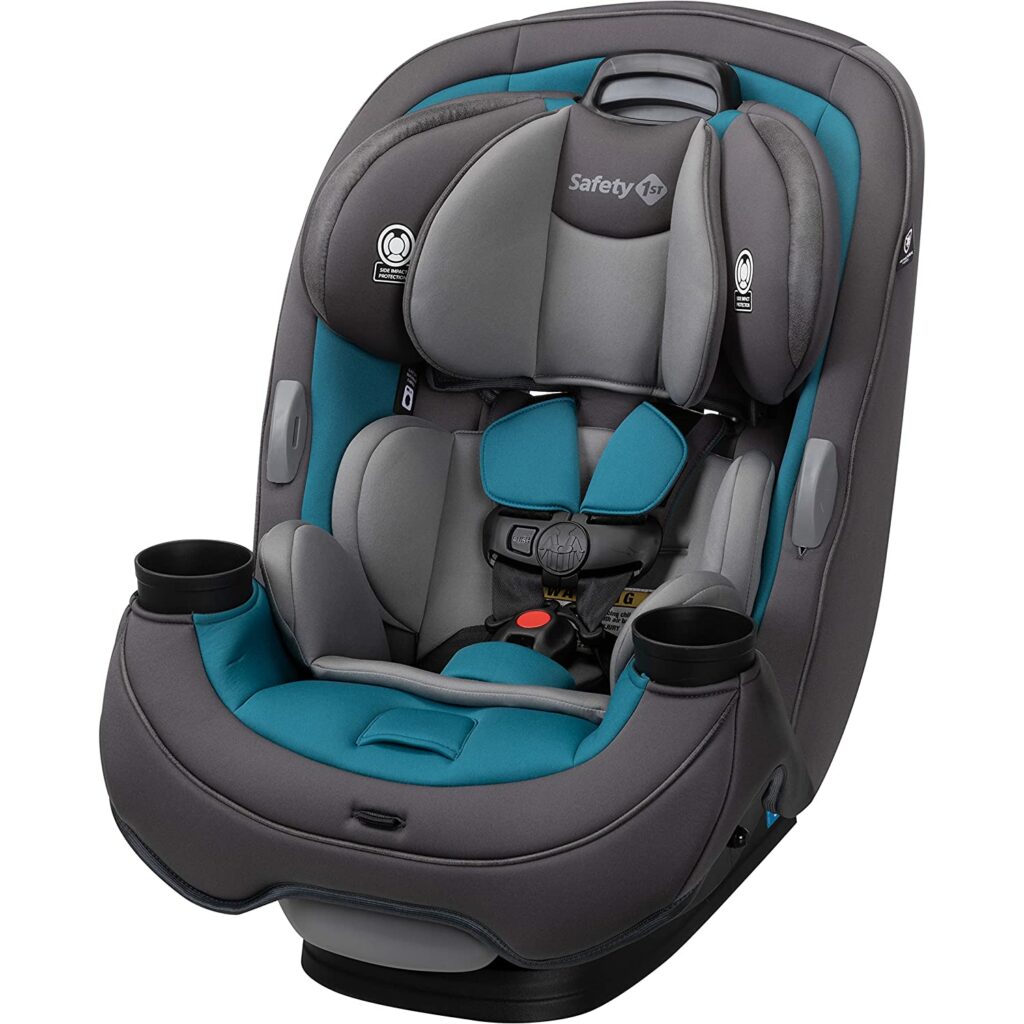
This is designed to develop alongside your child. As a rear-facing car seat, this safety 1st car seat can accommodate babies weighing 5 pounds to toddlers weighing 40 pounds. Its adjustable three-position recline makes it easy to find a comfortable fit for your car seat.
The harness holders keep the harness open, allowing getting into and out of the seat simpler. The smaller footprint of the rear-facing baby seat provides up to 7 inches of additional legroom for front-seat passengers. The fast fit harness permits you to modify the tallness of the headrest and harness in a single simple action.
Even in booster mode, the headrest easily adjusts to provide the greatest fit for your toddler. This is to keep food and beverages close at hand. This is simple to clean and the seat pad is removed easily.
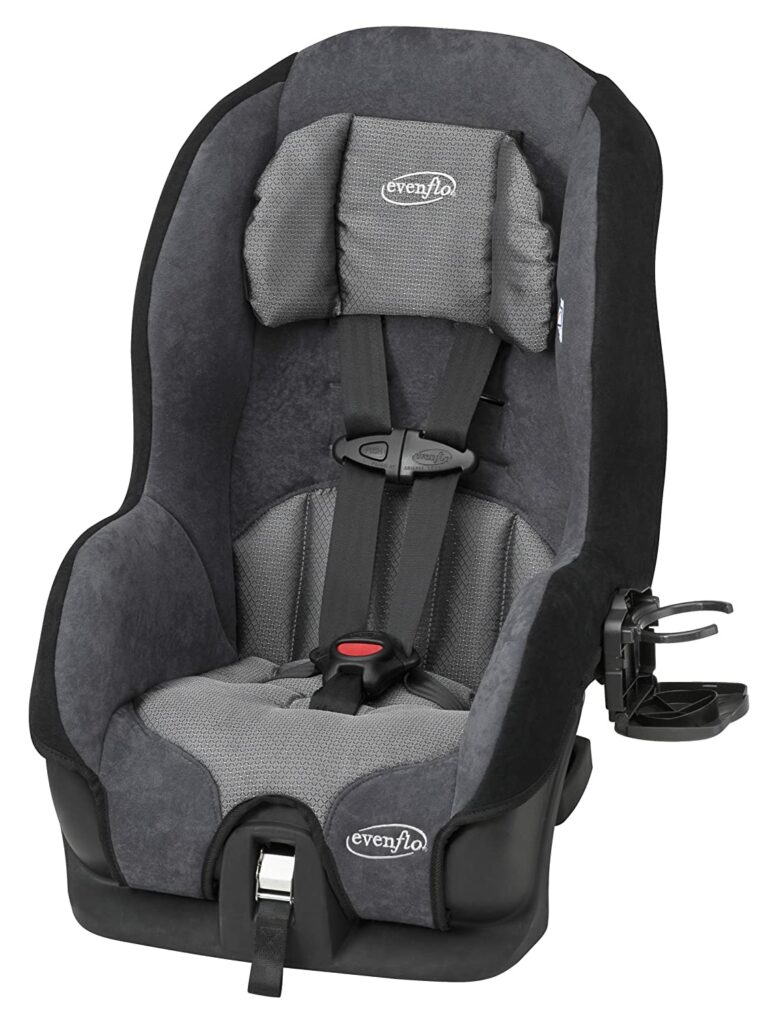
The Evenflo Tribute Convertible Car Seat blends safety, comfort, and convenience to provide the best value in child restraints. The Tribute’s compact design allows for a superior vehicle fit while delivering side impact protection.
This car seat has a cup holder that folds up to allow additional passengers and car seats. Try this seat for a high-quality extended-use alternative at a reasonable price. Built and tested professionally. This is to ensure structural integrity at high energy levels.
The top of your toddler’s head should be at least 1 inch under the top of the child’s constraint seatback while facing rearward. It incorporates a frontal harness adjustment and buckle release for simple and quick adjustments.

This rear-facing car seat offers two modes of operation. With a Cosco car seat, there is an exceptionally comfy latch. In a rear-facing position, it can support newborns weighing 5 pounds up to toddlers weighing 40 pounds. And children weighing up to 65 pounds in front-facing mode.
Its small size also causes it more comfortable to navigate airport security inspections. The 5-point harness is readily flexible from the front of the seat and comes in 5 heights and 3 buckle points. There is built-in side-impact safety to keep your child safe.
It is meant to be a perfect size. When rear-facing, the seat takes up less space, giving parents more legroom. It contains comfortable cushioning and high-quality materials. This seat provides a more comfortable trip for your youngster. The fabric car seat cover is also simple to clean, as it is machine washable and dryer safe.
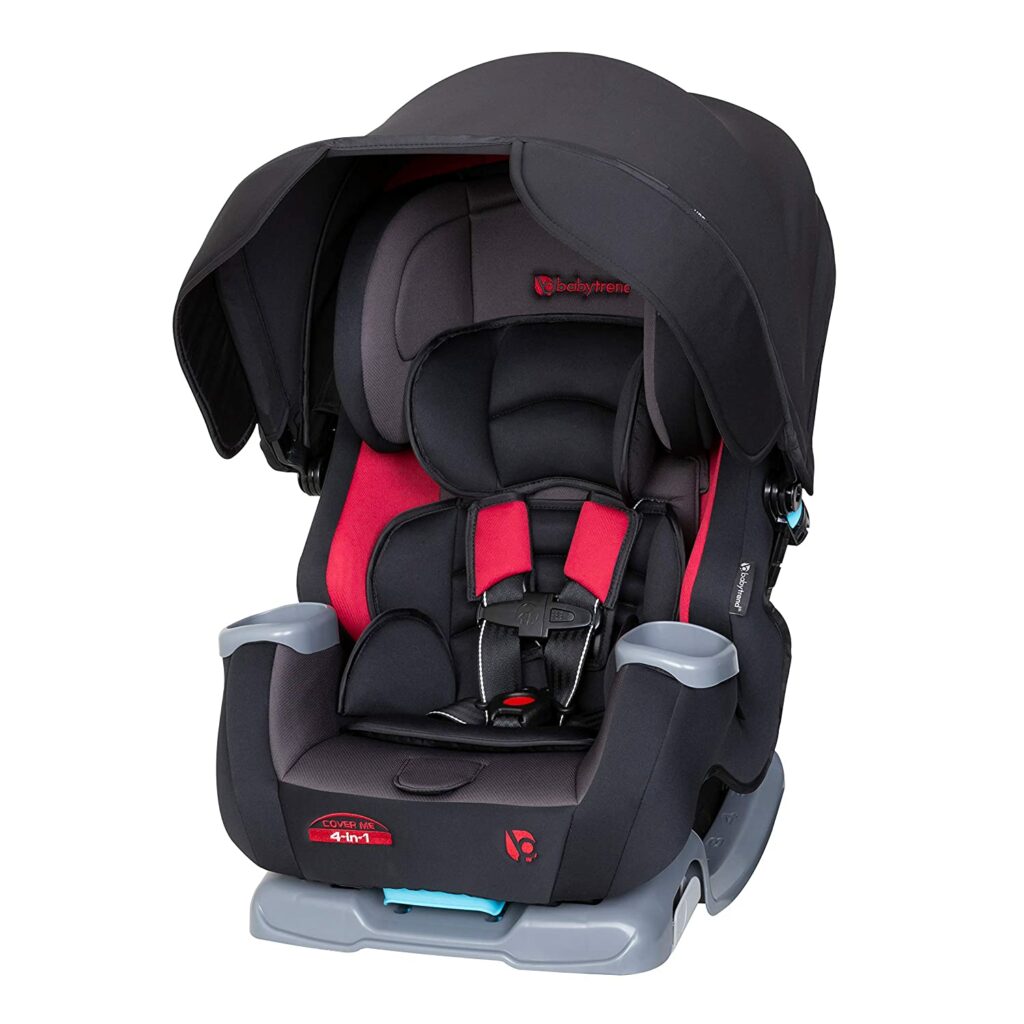
This seat includes an adjustable cover for UV protection. It has an adjustable height and angle canopy for in-car UV protection. The flip-out side visors offer additional shade on each side of the vehicle seat. It is made for long-term use.
When the automobile is moving and the sun is shining from all sides, your youngster can swiftly adjust the canopy. The distinctive comfort compartment of the “coverme” provides extra cushioning to keep your youngster comfortable on extended travels. It has a specific headrest and a no-rethread harness.
Three recline positions provide greater legroom for front-seat occupants. While an integrated reclining flip foot allows for double adjustment and easily acquires the desired angle.
Types of Rear-Facing Car Seats for Your Toddler
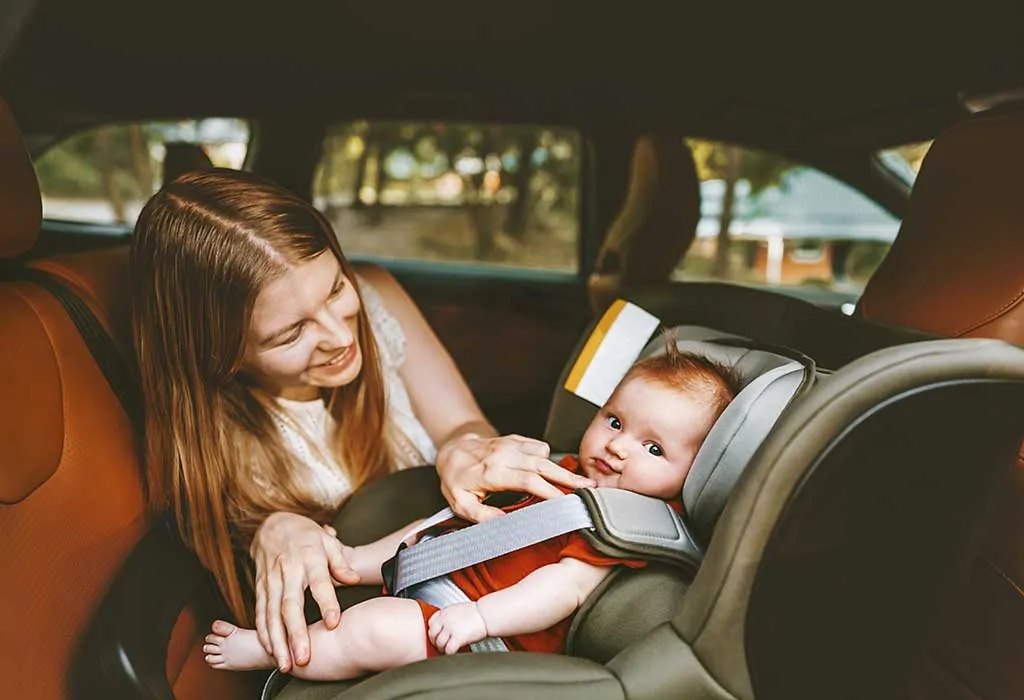
A decent car seat is one of the most crucial items you’ll buy for your toddler. You’ll require one from the time you bring your newborn home from the hospital until they can fit into an adult seat belt.
We discuss the many types of car seats available for your baby.
➖ Infant Car Seat
For most new parents, this is their first seat. This is only meant to be placed rearward. It includes a detachable carrier compatible with base found on your car. This car seat is ideal for infants and tiny babies, and it can accommodate youngsters weighing between 4 and 40 pounds.
Take note that most babies and toddlers will outgrow their car seats at some point. It’s important to replace or upgrade it once your kid’s head is about an inch away from the car seat’s top part. Also, you should check if your child already exceeded the weight limit rated for the specific car seat.
➖ Convertible Seat
Once your child is already too big or too heavy for an infant seat, the next best option is to purchase a convertible car seat. This has a higher weight limit, but remains rear-facing for your child’s safety.
Overall, convertible seats are suitable for toddlers. However, if your child is smaller than a normal kid of his age, this option may not be suitable.
➖ Booster Seats
At some point, your child will be too big to fit on the car seat harness. In this case, you need to get a booster seat, which will utilize the seat belt of the car. This is usually used on older kids or bigger toddlers who already exceeded the weight and height limit of a standard car seat.
For this, you can get either the backless or high-back type, whichever you find suitable.
➖ All-in-One Car Seats
If you don’t want the guessing game, you can purchase an all-in-one car seat instead. It will carry your child from birth up to the age when it needs a booster seat. So aside from convenience, it’s also a big money-saver.
However, you should also keep in mind that all-in-one car seats are bulky and it doesn’t have a separate carrier. Nevertheless, it works as a backup seat in case your baby travels in two different cars alternately.
➖ Toddler Booster
Children that have exceeded the limit of rear-facing seats but not ready for standard boosters fit toddler boosters. It’s usually cheaper than convertible seats without compromising the safety of your child.
Rear-Facing Car Seat Features to Look for
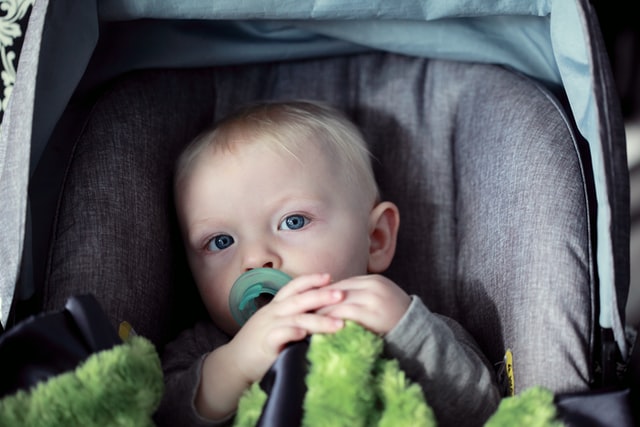
✔️ LATCH Connectors
Child seats with harnesses are often equipped with LATCH connectors. You can find these on the crease of the car seat, which is attached to the connector anchor.
Take note that this connector can only be used if your child is weighing under 65 lbs. If your child is beyond this limit, you need to use the car’s seat belt already. It’s also important to check the LATCH label to see the actual limit.
✔️ Top Tether Strap
Forward-facing harness seats have a full tether strap that hooks to the vehicle seat and maintains the shell of the child seat tight, minimizing the risk of head injuries dramatically. For all forward-facing installations, experts suggest that you secure the top tether.
✔️ Harness System
Every baby, convertible, all-in-one, and toddler booster seat has a built-in adjustable harness system. As your child develops, you’ll need to adjust the harness. Harness straps in rear-facing seats must be at or below the toddler’s shoulders.
Various harnesses may be modified. This is by rethreading the straps. This is through fabric and seat shell holes. Some, however, provide a simpler external harness adjustment alternative.
The chest clip should be at armpit level. When you can’t squeeze any strap fabric at the kid’s shoulders, the harness is snug enough.
✔️ Recline Indicator
A recline indication indicates if it is at the proper angle. Some chairs feature reclining ranges for people of various ages.
Babies start more reclined to prevent impeding their breathing, but as they get older, they become more upright, making more room for front-seat passengers.
✔️ Accessories
Many seats have coverings, pads, and cushions to improve fit and provide a more comfortable ride. Only use vital attachments. These features should be supported by the manufacturer.
Child Car Safety Tips You Should Know
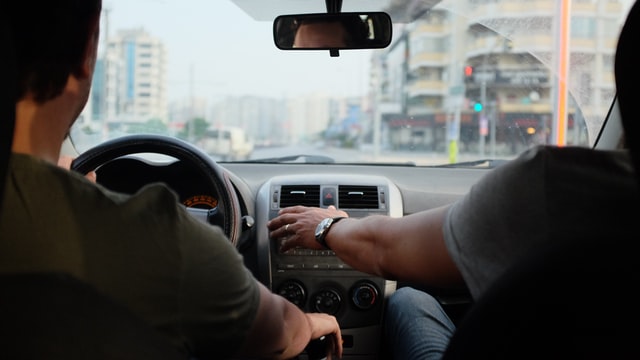
Stick to the Fundamentals
Buckle up for any trip, no matter how brief. It doesn’t get much simpler than that. Your children may not appear to listen to you, but they are observing you, so set a good example. The majority of collisions occur within 5 to 10 miles of your house.
Be Aware
Every year, many car accidents are reported. The greatest method to avoid injuries is to avoid a mishap in the first place. Stay sober, obey the speed limit, and most importantly, Keep an eye on what’s going on around you. Learn how to drive defensively.
Stay Focus
Text messaging doubled the chance of an accident caused drivers to take their eyes off the road for an average of 20 seconds.
Understand the Minimums
Remember that obeying your state’s legislation may be the bare minimum, not the safest option. It is important to understand your state’s kid restraint law. This is so that you know what is legally needed. And you may pick what is safest based on best practices.
Read the Manual
Read your handbook. It is filled with vital information. One is that it explains the various sections of the car seat and what they perform. It also includes instructions for installation. So take out the pamphlet, have a cup of coffee, and read it.
Try Before you Buy
Did you know that many retailers enable you to take car seats out and test them in your vehicle before purchasing them? This is a good idea since you want to ensure that the car seat you choose will fit in your vehicle and that you will be able to install it.
Backward is Preferable
Children should face backward for as long as feasible. For more than a decade, the American Academy of Pediatrics has recommended waiting until at least the age of two.
Some states have already started to adjust their legislation to reflect this advice. And, even for older children, rear-facing is 5 times safer, so keep your child rear-facing for as long as feasible, but at least until age 2.
Perform the One-inch Test
When fitting a car seat, it should be snug. Not so tight that you jiggle the whole thing when trying it. When pulled on the belt route, it moves less than an inch each side and forward and back.
Check to See Whether it’s Prickly
You also want the harness strap to be snug around the youngster. Tighten the child’s strap and try to crimp it between your thumb and forefinger. The harness is still too slack if you can squeeze the webbing together.
Before you Lock, have a Look
Many children are harmed by overheated cars. Most parents believe it will never happen to them and that they would never forget, yet even the finest parents can accidentally leave a sleeping kid in the car. This frequently occurs when a drowsy parent does something out of the ordinary.
Keep Warm Without the Coat
Winter clothing and car seats do not get along. The weight of the winter coat will compress after a collision, causing the harness straps to be too loose over the youngster. This creates a hazardous scenario.
No Munching in the Car
Don’t offer your youngster food or liquids in the car, as dumb as it may sound. What happens if your toddler begins to choke? Or do you think they are? Your protective parental instincts may take over, causing you to make bad decisions about how, when, and where to pull over to solve the situation. This can endanger both you and your toddler.
Big Kids, too, Require Protection
Although many jurisdictions do not mandate children to use car seats after a specific age. Children must use a restraint. This is until they can pass the five-step seat belt fit test. This usually does not happen until the youngster is 4’9″ tall, which may not happen until the child is 10 or even 12 years old.
Keep Safety in Mind
Utilize a car seat on a flight. You’ll also need a kid restraint if you drive to your location. So, you can travel with various lightweight chairs or alternatives.
Reasons to Keep Your Child Rear-Facing in the Car
It’s inviting to transition your toddler to a forward-facing car seat. However, professionals advise maintaining your toddler in a rear-facing car seat for as long as feasible. This is the safest approach to keep your child safe and stop a devastating injury in the case of an accident.
1
Rear-facing is still the safest way to ride for youngsters. This is from the American Academy of Pediatrics, which just revised its automobile safety rules.
2
Every transition diminishes a child’s level of protection in the case of a crash. Parents should not push their children out of rear-facing seats and, subsequently, booster seats before they are ready.
3
A rear-facing car seat absorbs the majority of the impact forces and provides support for the head, neck, and spine. Children’s heads are thrust forward when riding front-facing. This is potentially resulting in spine and head injuries.
4
Many car seat manufacturers have designed seats that allow youngsters to stay rear-facing until they reach the weight of 40 to 50 pounds. Numerous infant-only seats have a weight limit of 35 to 40 pounds.
5
There is no evidence that youngsters will get leg and foot injuries if their feet come into contact with the seat. There are no known negative consequences of riding rear-facing for an extended period of time.
When facing the back, children have various options for making themselves comfortable and may ride securely. As long as they haven’t exceeded the measurement limits for rear-facing in their seat, they can do so. This might be far past two years for many children.
Frequently Asked Questions
Q: When will my infant be able to face forward?
A: Experts suggest that newborns ride in rear-facing seats until they are two years old, or until they exceed the height or weight limit of the car seat.
Q: What are the maximum height and weight for rear-facing?
A: Weight limits for infant rear-facing car seats are often 22 pounds or higher. This should be indicated on the seat’s label. As well as in the owner’s handbook.
Q: Why is it safer to face the back?
A: A rear-facing car seat absorbs the majority of the impact forces and provides support for the head, neck, and spine. Children’s heads are thrust forward as they ride face front. This can cause spinal and head damage.
Q: Is it safe to use front-facing car seats?
A: Forward-facing child seats can be used. This is in either the front or back of the vehicle. So, it is best to keep kids in these seats until they have outgrown them.
Q: What are a car’s safety features?
A: Airbags, shatter-resistant glass, anti-lock brakes, stability control, and other technologies safeguard drivers better than ever before.
Final Thoughts
That’s all there is to it. For your children, these are the most dependable rear-facing car seats. They should ride in a rear-facing vehicle safety seat for as long as feasible, up to the restrictions of the seat. This will encompass almost all children under the age of two and the majority of youngsters up to the age of four.
Children under the age of 13 should be secured. Moreover, this is to ensure their safety and security during automobile travel. When it comes to this, you can never be too cautious.
